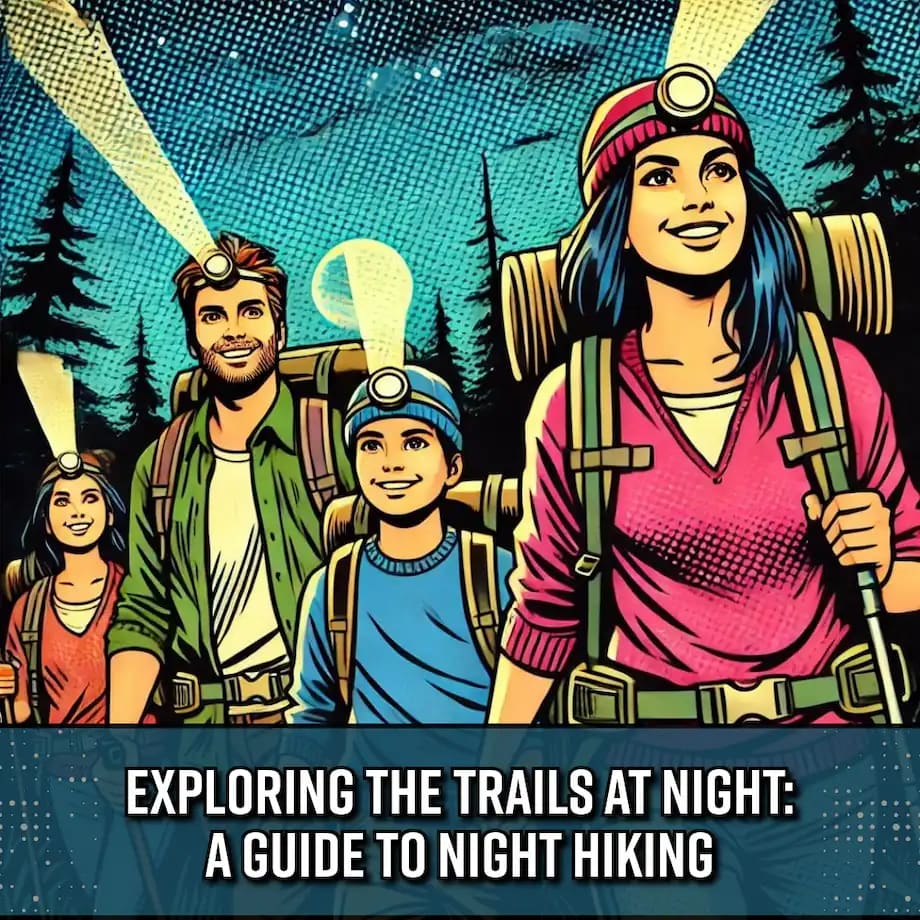Easy Hiker's First Aid Kit DIY Guide
- Originally Published
- Last Updated:
Hey there, fellow hikers and outdoor enthusiasts! Are you gearing up for a beautiful hike in nature? We want to make sure that you’re ready for any situation that may arise while you’re out on the trail. That’s why we’re here to talk about the importance of a well-stocked hiker’s first aid kit.
Many people think that a first aid kit is only necessary for long or difficult hikes. But the truth is, accidents can happen at any time. This is especially true if you’re a new hiker or have children with you. Having a first aid kit on hand could be the difference between a minor inconvenience and a serious emergency.
In this post, we’ll be discussing what you should include in your hiker’s first aid kit. This is the kit you’ll take with you as you hike. We’ve also written a guide on putting together a camper’s first aid kit, which should stay at camp or in the car.
We want to make sure that you’re fully prepared for any situation that may arise on the trails. From minor cuts and scrapes to more serious injuries, having a properly stocked hiking first aid kit can make all the difference. So, let’s get started on putting together the perfect hiker’s first aid kit.

Key Takeaways:
- A DIY hiker’s first aid kit is crucial for addressing minor injuries and emergencies while hiking.
- Building your own first aid kit allows for customization based on your specific needs.
- Essential items for a hiking first aid kit include medications, wound care supplies, tools, and an emergency communication device.
- Pre-made hiking first aid kits offer convenience and a well-rounded selection of supplies.
- Enrolling in wilderness first-aid training classes equips you with the necessary skills to handle medical emergencies while hiking.
Why DIY?
There are two important reasons we suggest going the do-it-yourself route for first-aid kits. The first, and most important, is that it will save you money. You can buy most of these items in larger quantities, then split them up between your different kits. Don’t buy a kit from the store, 99% of them are overpriced garbage.
The other important reason for putting together your own kit is that you will know exactly what is in there, and where it is. More importantly, you will know why everything is in there and what it is for. In an emergency, you won’t have to search through your pack to see if you have what you need. That will save you time, and reduce your stress too.
Why Do You Need to Carry a First Aid Kit?
Carrying a first aid kit is of utmost importance when hiking in the wilderness. While hiking can be a thrilling and enjoyable activity, it also comes with inherent risks. Whether it’s minor injuries like cuts, scrapes, blisters, or more serious emergencies, the wilderness presents unique challenges that can leave you vulnerable without proper preparation. Having a well-stocked first aid kit ensures that you are equipped to handle unexpected situations promptly and effectively.
Minor hiking injuries are relatively common, and having a first aid kit can help address these ailments immediately. For example, if you sustain a minor cut, having antiseptic wipes, bandages, and tape readily available allows you to clean and dress the wound, preventing further infection. Similarly, in case of blisters, proper blister care supplies in your kit can provide relief and prevent discomfort from escalating.
In addition to minor injuries, wilderness emergencies can also occur during hiking trips. These emergencies may include sprained ankles, allergic reactions, or heat-related illnesses. A comprehensive first aid kit enables you to administer appropriate first aid measures while awaiting professional medical assistance. For instance, antihistamines can be crucial in managing allergic reactions, while pain relief medications can alleviate discomfort caused by sprains or strains.
By being proactive and carrying a first aid kit, you prioritize your safety and well-being, as well as that of your fellow hikers. It gives you peace of mind, knowing that you are prepared for any unforeseen circumstances that may arise during your outdoor adventures.
The 22 Items We Recommend For Your Hikers First Aid Kit
When it comes to building your DIY hiker’s first aid kit, there are several essential items that you should include. These items will help you manage and treat minor injuries and discomforts that may occur while hiking.
- A Couple Pairs Of Latex Free Gloves [Buy From Amazon]
- A Few Assorted Bandages [Buy From Amazon]
- A Few Assorted Butterfly Bandages To Close Wounds [Buy From Amazon]
- Sheet of Moleskin for Blisters [Buy From Amazon]
- Quick Clot Gauze [Buy From Amazon]
- A Couple of Individually Wrapped Gauze Pads [Buy From Amazon]
- A Self-Adherent Bandage Wrap or Two [Buy From Amazon]
- Roll of Medical Tape [Buy From Amazon]
- Several Individually Wrapped Antiseptic Wipes [Buy From Amazon]
- Triple Antibiotic Cream [Buy From Amazon]
- Travel Size Hand Sanitizer [Buy From Amazon]
- Instant Cold Compress Pack [Buy From Amazon]
- Instant Heat Pack (In Cold Weather) [Buy From Amazon]
- Emergency Blanket [Buy From Amazon]
- Swiss Army Knife With Tweezers and Scissors [Buy From Amazon]
- Stainless Steel Medical Shears [Buy From Amazon]
- Pain & Fever Relief Pills [Buy From Local Pharmacy]
- Antacid Tablets [Buy From Local Pharmacy]
- Antihistamine Pills [Buy From Local Pharmacy]
- Electrolyte Powder Pack For Dehydration [Buy From Amazon]
- Emergency Whistle [Buy From Amazon]
- Travel-Sized First Aid Booklet [Buy From Amazon]
First Aid Kit Pouch
When it comes to carrying your DIY hiker’s first aid kit, having a suitable pouch is essential. A good first aid kit pouch should be lightweight, water-resistant, and compact enough to fit into your backpack without taking up too much space. It should also be durable and able to keep your first aid items organized and protected from water damage. There are various options available for first aid kit pouches, ranging from pre-made pouches specifically designed for first aid kits to small toiletry bags that can be repurposed.
When choosing a first aid kit pouch, it’s important to consider your specific needs and preferences. Some people prefer pouches with multiple compartments and pockets for easy organization, while others prefer a simple and compact design. Additionally, look for pouches made from water-resistant materials to ensure that your first aid items stay dry even in wet conditions. Ultimately, the best first aid kit pouch for you is one that meets your needs in terms of size, durability, and functionality.

POWNEW MOLLE Pouch Tactical EMT Medical First Aid IFAK Pouch for Outdoor Activities Medical Supplies (Bag Only) Made of high-quality durable military-grade 900D waterproof fabric material with better tear & water resistance to better protect the outdoor emergency supplies you need.
First Aid Skills
Having a properly stocked first aid kit is only half the solution. It’s important to understand how to use the supplies and that requires training. It’s probably possible to learn first aid from books and video but we recommend that you take a basic first aid and CPR course from a certified trainer. We have both been through CPR and first aid training several times and highly recommend it for everyone. The skills you learn are invaluable and, pardon the cliche, the life you save could be your own.
First Aid Training Resources:
- American Red Cross First Aid Training
- American Red Cross Online First Aid Training
- American Heart Association Training
- Medline First Aid Links

Conclusion
A hiker’s first aid kit is an essential piece of gear for any hike, regardless of the distance. Even if the hike seems easy, take it with you. Remember to always check and replenish your first aid kit before heading out on a hike, and to be familiar with the contents and how to use them. Have a safe and enjoyable hike!
FAQ
Q: Why is carrying a first aid kit crucial when hiking in the wilderness?
A: Carrying a first aid kit is crucial when hiking in the wilderness because it allows you to address minor injuries and emergencies promptly and effectively.
Q: What are the essential items to include in a DIY hiker's first aid kit?
A: Essential items to include in a DIY hiker's first aid kit are adhesive bandages, roll gauze, medical tape, antiseptic wipes, pain relievers, antihistamines, anti-itch cream, tweezers, scissors, hand sanitizer, and an emergency blanket
Q: Are there pre-made hiking first aid kits available in the market?
A: Yes, there are pre-made hiking first aid kits available in the market. Some highly recommended options are the Mountain Series Backpacker Medical Kit and the MyMedic Solo kit.
Q: What should I look for in a first aid kit pouch?
A: Look for a first aid kit pouch that is lightweight, water-resistant, and compact enough to fit into your backpack. It should be durable, easily accessible, and able to keep your items organized and protected from water damage.
Q: What medications should I include in my hiking first aid kit?
A: Include pain relievers like ibuprofen and acetaminophen, antihistamines for managing allergic reactions, and anti-itch cream for insect bites and stings.
Q: What wound care supplies should I include in my hiking first aid kit?
A: Include adhesive bandages of various sizes, roll gauze, medical tape, antiseptic wipes or solutions, and disposable surgical gloves for wound care.
Q: What tools should I include in my hiking first aid kit?
A: Include tweezers for removing splinters and ticks, scissors for cutting bandages and tape, hand sanitizer for maintaining hygiene, and sunscreen for sunburn prevention. Also, include an emergency blanket and a waterproof fire starter for emergency situations.
Q: Are there recommended pre-made hiking first aid kits?
A: Yes, the Mountain Series Backpacker Medical Kit and the MyMedic Solo kit are highly recommended pre-made hiking first aid kits.
Q: Should I carry an emergency communication device while hiking?
A: Yes, it's crucial to carry an emergency communication device, especially in remote or challenging terrains. The Garmin inReach Mini is a reliable GPS communication device that allows you to send emergency distress signals even without cell service.
Q: Are there wilderness first-aid training classes available?
A: Yes, wilderness first-aid training classes are available. You can consider enrolling in classes offered by REI stores, the National Outdoor Leadership School (NOLS), or Wilderness Medical Associates International (WMAI) to learn how to properly use your first aid kit and handle different medical emergencies while hiking.
If You Found This Helpful, Please Share:
By Summer and Bill

Summer and Bill are the dynamic duo behind Adventureite.com, a blog dedicated to inspiring others to explore the great outdoors. With a combined lifetime of experience traveling and adventuring across America, they have a wealth of knowledge to share. From hiking to camping, kayaking to travel, Summer and Bill are passionate about helping others discover the beauty of the natural world.
 Adventureite
Adventureite






